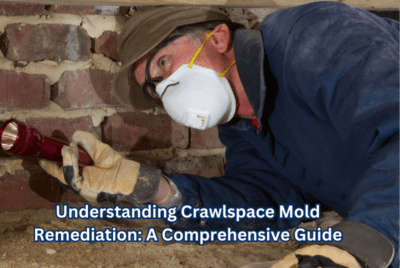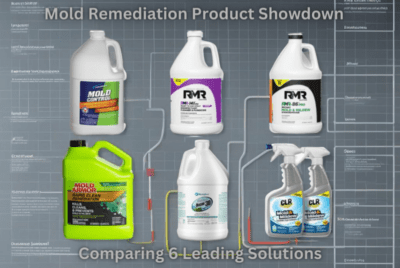Do Air Purifiers Help With Mold?
Ever woken up with a stuffy nose and wondered why your allergies are flaring up inside your home? Or perhaps you’ve noticed those unsettling dark patches lurking in your bathroom or basement. Do air purifiers help with mold? Before we assess their capabilities in tackling this issue, let’s delve deeper into understanding the enemy we’re up against.
What is Mold?
Mold is a type of fungus present almost everywhere in our environment, both indoors and outdoors. Many people often wonder, “Do air purifiers help with mold in the surrounding environment?” To answer that, it’s vital to understand mold’s nature.
Characteristics of Mold
Molds thrive in damp, warm, and humid conditions. Their reproduction is facilitated by the release of spores, microscopic particles that can float around in the air. These spores, when landing on a favorable spot, can grow into new mold colonies.
Effects of Mold on Health
Exposure to mold can have various health implications. With rising concerns, many homeowners often ask, “Do air purifiers help with mold-related health issues?” The symptoms of mold exposure can range from nasal stuffiness, throat irritation, coughing, wheezing, to skin and eye irritation.
How Air Purifiers Work
Air purifiers are devices designed to cleanse the air, removing particles like pollutants, allergens, and yes, mold spores. They work by drawing air in, passing it through various filters that trap these unwanted particles, and then releasing the cleaned air back into the environment.
Types of Air Purifiers
HEPA Filters
High Efficiency Particulate Air (HEPA) filters can trap particles as tiny as 0.3 microns with a 99.97% efficiency. This efficiency brings us back to our primary question: Do air purifiers help with mold? Given that this size is significantly smaller than most mold spores, these filters can be quite effective against mold.
Activated Carbon Filters
While these might not be adept at capturing mold spores, they are phenomenal at removing odors, including the musty smell often associated with mold and mildew.
UV-C Light
Some air purifiers come equipped with UV-C light, which can kill mold by damaging its DNA. It’s like giving mold a lethal sunburn.
The Role of Air Purifiers in Mold Removal
So, when posed with the question of whether air purifiers help with mold, the answer is a resounding yes. However, there’s a caveat. They assist in reducing the number of mold spores in the air but won’t tackle the root cause of mold growth.
Benefits
The primary advantage of using air purifiers is the marked improvement in indoor air quality. Reduced mold spore count, removal of unpleasant odors, and mitigation of mold-related allergic reactions are just some of the perks.
Limitations
While they do wonders in purifying the air, they don’t address mold’s source, like that damp patch in the corner of your basement. Addressing water leaks, ensuring proper ventilation, and keeping humidity in check are critical components of a comprehensive mold combat strategy.
Tips for Using Air Purifiers to Combat Mold
- Location: Place it in areas prone to mold growth like basements or bathrooms.
- Maintenance: Regularly check and replace filters to ensure optimal performance.
- Consistent Use: Running your purifier continuously maximizes its effectiveness.
Alternatives to Air Purifiers
Though air purifiers play a stellar role, other methods can be employed in tandem to battle mold:
- Dehumidifiers: Reduce moisture levels, making environments less hospitable to mold.
- Essential Oils: Certain oils, like tea tree oil, have mold-fighting properties.
- Regular Cleaning: Simple, yet effective. Regularly cleaning surfaces, especially in damp areas, can prevent mold growth.
Conclusion
The mere thought of mold can make one’s skin crawl. Its implications for our health and our homes make it an adversary worth our attention. While air purifiers play a commendable role in improving the quality of our indoor air, remember, they are just one piece of the puzzle. Combining their prowess with other preventive measures can make your home a mold-free sanctuary.
Frequently Asked Questions (FAQs)
1. Do air purifiers also remove other allergens?
Absolutely! They can remove pollen, pet dander, and dust mites, to name a few.
2. Are there specific brands best for mold?
While many brands can effectively reduce mold spores, always check reviews and specifications before purchasing.
3. How often should the room be ventilated?
Ideally, once a day. Fresh air can help reduce indoor pollutants, including mold spores.
4. What’s the best humidity level to prevent mold growth?
Keeping indoor humidity below 50% can significantly deter mold growth.
5. Is it safe to live in a house with mold?
Prolonged exposure to high levels of mold can be harmful. If you suspect a severe mold issue, consult an expert.
For further reading visit these suggested sites:
- U.S. Environmental Protection Agency (EPA): The EPA is a reliable source for information related to air purifiers and their components.




